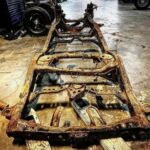It’s a scenario no auto repair shop owner wants to imagine: a customer getting injured on their premises. While your primary focus is on vehicle maintenance and repair, ensuring customer safety within your shop is equally critical. Understanding your responsibilities and potential liabilities when “a customer got hurt at my auto repair shop” is crucial for protecting your business and your clientele.
Auto repair environments, by their nature, can present various hazards. Slick floors from oil spills, heavy equipment, and moving vehicles all pose risks if not properly managed. While the Repair Shop Act primarily outlines customer rights concerning repair estimates, authorized work, and invoices, it’s implied that these services are to be conducted in a reasonably safe environment for the customer.
Customers have the right to expect a safe environment when visiting your repair shop. This extends beyond the quality of repair work to encompass their physical well-being while on your property. If an accident occurs and a customer sustains injuries at your shop, several factors will come into play to determine liability.
Were there clear warning signs for hazards? Was the area where the injury occurred reasonably safe for customer access? Was the injury a result of negligence on the part of the shop or its employees? These are the types of questions that will be considered.
While the Repair Shop Act doesn’t explicitly detail injury liability, general premises liability principles apply. As a shop owner, you have a duty of care to ensure your premises are safe for customers. This includes:
- Maintaining a clean and organized workspace to minimize trip and fall hazards.
- Properly storing hazardous materials.
- Ensuring customer waiting areas are separate from active repair zones and are free from hazards.
- Providing clear warnings about any potential dangers.
If a customer is injured, documenting the incident thoroughly is essential. This includes gathering witness statements, taking photographs of the scene, and recording all relevant details. Review your insurance policies to understand your coverage in case of customer injuries.
Preventing accidents is always the best approach. Regularly inspect your shop for potential hazards, train employees on safety protocols, and maintain clear communication with customers about safety procedures. Being proactive about safety will not only protect your customers but also safeguard your business from potential legal and financial repercussions if “a customer got hurt at my auto repair shop”. While customer rights regarding repair services are important, ensuring their safety while on your premises is a fundamental responsibility.

